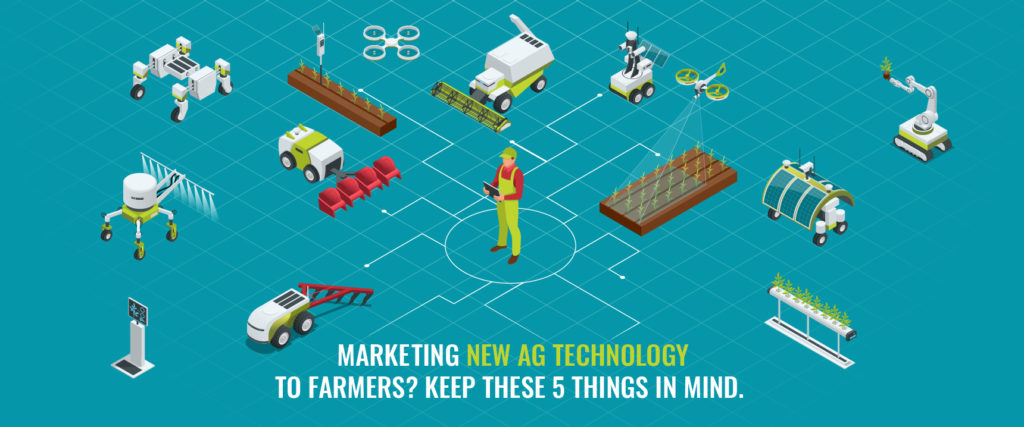Agriculture in the age of AI algorithms and biomimicry is not only changing how farmers work, but how food, fiber, and fuel is produced. As fledgling agribusiness startups and established giants unload a barrage of new products to farmers, however, even the best products on earth will fall flat if their ag technology marketing approach fails to embrace the pecking order.
Farmers are filtering companies they do business with using this pecking order. It separates the pretenders — those who yet lack the funding and market-readiness — from the performers with proven technology and products that can have a real impact on farmer profitability. If you don’t know that filter exists though, you risk looking like a pretender even if your product is solid.
It’s been my privilege in the last two decades to sit down and chat with a lot of agricultural folks. From farm workers to big ag company CEOs. We all want a successful agriculture industry that sustains those who choose to make it their career. But when it comes to ag technology marketing, and the farmers seek to connect with, there’s a lot of divergence.
As coders, programmers and AI architects bring new skills to the industry and spawning revolutionary change, there are many cases it’s for the better but also sometimes for the worse. The road to ag technology marketing success is littered with carcasses of failed or underfunded plans, ideas and product prototypes. The farmers have a front seat to the destruction. They tried X, it cost them money, and now they’re careful.
Farmers know you have to spend money to make money. But it’s enough of a struggle to justify purchases of the right combination of seed, chemical, fertilizer and machinery to raise a bumper crop. Adding new technology — some of which may not even be proven on a practical scale — is a tall order. This is especially true in a largely fiscally conservative demographic.
How Ag Technology Marketing Will Evolve
How do ag technology marketers overcome the reluctance, speak successfully to farmers, and make the sale? A few core ideas will help connect AgTech to farmers. Whether you’re a hot new startup or a century-old ag manufacturer:
Marketing needs realism.
Ag technology marketing pros must remember they’re working in an industry in which everybody’s selling something to somebody. As a result, farmers are generally shrewd businesspeople for whom cynicism is sometimes natural. Don’t promise the moon and stars in your new technology. Realistic assurances — not promises of enormous, transformative results — will net you more confidence. In turn, sales among farmers who typically have a thick skin when it comes to sales pitches.
Marketers needs to educate.
Farmers are intelligent and they’re problem-solvers. Ag technology marketers need to start conversations with them with this in mind. Talk to them about his or her grain marketing strategy. For example, and you might feel like you’re in a Fortune 500 company’s board room. Treat them that way. Find out their needs. Acumen for your specific type of tech, and get a real feel for how they operate their business. Connect that understanding with what you do. Respectfully show him or her how you can make measurable improvements in a component of their business and you won’t get the door slammed in your face. (Dazzle them ’em with brilliance and you might.)
Marketing needs more compassion.
Sure, you have a great product. The problem is that every ag technology marketing person believes the same thing. What often separates those that thrive from those that don’t is the exhibition of how much they actually care about the farmers who you want to become customers. Farmers will listen when they know you care, and the best way to do that is create a connection via some sort of shared challenge that can be remedied by adoption of your product or service.
Marketers need to shut up and listen.
What’s that old saying about why we have two ears and one mouth? The most successful ag technology marketers and salespeople I’ve met have a common trait. They listen first before starting a pitch. Sure, there’s new technology whose function doesn’t have an existing benchmark for comparison, like the very first iPhone. But you’re starting off on the right foot if you can listen first, then connect what you do with what farmers do.
Marketing must adapt.
You have a better chance of falling flat on your face with a new ag tech innovation than you do becoming the next John Deere. Even after you’ve listened to your target customers and connected what you do directly to their needs. But if that happens at first, go back to the fourth item on this list — listening — and find out how you can become better. Show you’re listening and willing to make the changes necessary to connect with potential customers.
***
Ag tech’s job is to continue pushing the envelope and developing new tools, products and services to better serve farmers and agricultural people. But sometimes that process takes a little more time, attention and education than the often breakneck-paced tech world will acknowledge. You might not always succeed at first, but working together with farmers as your target customer group may put you at the reins of an ag company with generations-long customer loyalty.
John Deere didn’t become an instant millionaire when he introduced his first steel moldboard plow in 1837. But, it’s worked out pretty well since then. If I can help you or your company with any of the above considerations, I’d love to help. Drop me a line!
LF Newsletter Alert
Want Lessing-Flynn to rock the socks off your inbox with insights and more?




